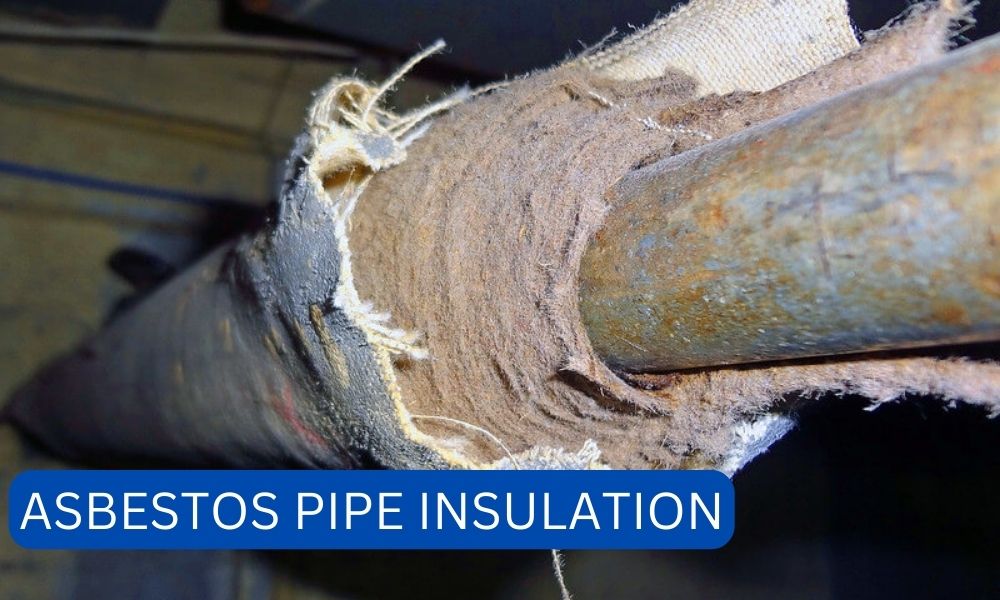Asbestos pipe insulation is a material that was commonly used in buildings for insulation purposes until the late 1970s when its health risks became widely known. It was primarily used to insulate pipes in residential, commercial, and industrial settings. Asbestos pipe insulation is known for its durability, heat resistance, and fireproofing properties. However, it poses a significant health risk due to the release of asbestos fibers into the air when disturbed or damaged.
Contents
Why was asbestos used for pipe insulation?
Asbestos was widely used for pipe insulation due to its unique properties. It is a naturally occurring mineral that can be easily woven into a fabric-like material. Asbestos fibers are resistant to heat, fire, chemicals, and electricity, making it an ideal choice for insulating pipes that carry hot fluids or gases. Additionally, asbestos is durable and has excellent soundproofing properties, making it a popular choice for insulation in buildings.
What does asbestos pipe insulation look like?
Asbestos pipe insulation can take on different appearances depending on its age, type, and condition. Here are some common characteristics to look for:
- Color: Asbestos pipe insulation is typically gray or white, but it can also be found in other colors such as yellow, brown, or blue. The color may vary depending on the specific type of asbestos used and any added binders or coatings.
- Texture: Asbestos pipe insulation has a fibrous texture, similar to cotton or wool. It may appear fluffy or crumbly, and the fibers can easily become airborne when disturbed.
- Shape: Asbestos pipe insulation is commonly found in the form of wraps or blankets that are wrapped around pipes. It can also be found as a loose-fill material or as a spray-on insulation.
- Size: Asbestos pipe insulation can vary in thickness, ranging from a few millimeters to several centimeters. The size of the insulation depends on the specific application and the level of insulation required.
Identifying asbestos pipe insulation
Identifying asbestos pipe insulation can be challenging, as it may be hidden behind walls, ceilings, or other building materials. However, there are some signs that can help you identify its presence:
Read:What was d day weegy?- Age of the building: If the building was constructed before the late 1970s, there is a higher likelihood of asbestos-containing materials, including pipe insulation.
- Visual inspection: Look for insulation materials that match the description of asbestos pipe insulation, such as the color, texture, and shape mentioned earlier.
- Lab testing: If you suspect the presence of asbestos pipe insulation, it is recommended to have a sample tested by a certified laboratory. They can analyze the sample and determine if it contains asbestos fibers.
Health risks associated with asbestos pipe insulation
Asbestos pipe insulation poses significant health risks due to the release of asbestos fibers into the air. When the insulation is disturbed or damaged, microscopic asbestos fibers can become airborne and easily inhaled. These fibers can lodge in the lungs and cause serious health conditions, including:
- Asbestosis: Asbestosis is a chronic lung disease caused by the scarring of lung tissue due to asbestos fibers. It can lead to breathing difficulties, coughing, and permanent lung damage.
- Lung cancer: Exposure to asbestos fibers increases the risk of developing lung cancer. It is estimated that asbestos exposure is responsible for a significant number of lung cancer cases worldwide.
- Mesothelioma: Mesothelioma is a rare and aggressive form of cancer that primarily affects the lining of the lungs, abdomen, or heart. It is almost exclusively caused by asbestos exposure.
Safe removal and handling of asbestos pipe insulation
If you suspect the presence of asbestos pipe insulation in your building, it is crucial to handle it safely and follow proper removal procedures. Here are some guidelines to consider:
Read:What watt bulb for leopard gecko 20 gallon tank?- Consult professionals: It is recommended to hire a licensed asbestos abatement professional to assess the situation and safely remove the asbestos pipe insulation if necessary. They have the expertise and equipment to handle asbestos safely.
- Minimize disturbance: Avoid disturbing the asbestos pipe insulation to prevent the release of fibers into the air. Do not touch or remove the insulation yourself unless you are trained and equipped to do so.
- Use protective gear: If you need to work near asbestos pipe insulation, wear appropriate personal protective equipment (PPE) such as disposable coveralls, gloves, goggles, and a respirator to minimize exposure to asbestos fibers.
- Proper disposal: Asbestos waste must be disposed of according to local regulations. It should be sealed in leak-tight containers and transported to a licensed asbestos disposal facility.
Summary
Asbestos pipe insulation was commonly used in buildings for its heat resistance and fireproofing properties. It can be identified by its gray or white color, fibrous texture, and various shapes and sizes. However, asbestos pipe insulation poses significant health risks due to the release of asbestos fibers when disturbed. Exposure to asbestos fibers can lead to serious lung diseases such as asbestosis, lung cancer, and mesothelioma.
Read:What’s blue but not heavy?If you suspect the presence of asbestos pipe insulation, it is crucial to consult professionals and follow proper removal procedures to ensure the safety of occupants and workers. Handling asbestos requires expertise, protective gear, and adherence to local regulations for disposal. By taking appropriate precautions, the risks associated with asbestos pipe insulation can be minimized, and the health and well-being of individuals can be protected.









